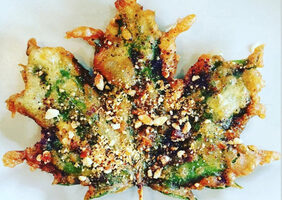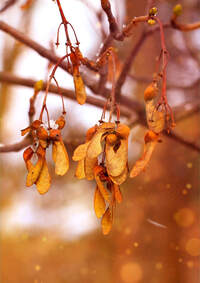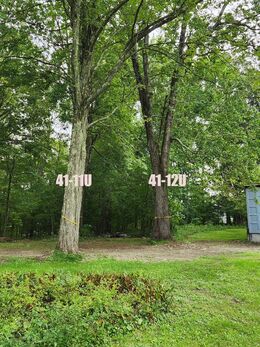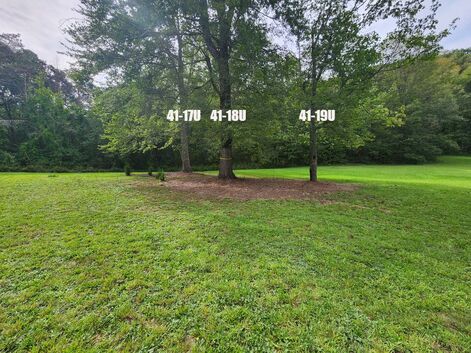 Since the move to my new home, I have been learning much about the ecology of my surrounding woodlot. There is plenty to observe about the soil (rocky and slightly to very acidic), the water (not overly acidic or hard), and the animals (frogs, fox, turkeys, and bear)! Also of note are the sheer quantity of Maple Trees, which are provocative both from aesthetic and educational perspective. You Know a Maple When You See OneMost people are familiar with Maple Trees. After all, the most common tree in the United States is the Red Maple, since it can tolerate a wide range of habitats. Red Maples do well in sun or shade, as well as high or low elevation. Their adaptable roots also help them to cope in dry or wet soils and differing soil types. We've all seen Maple leaves! The familiar looking sunlight absorbers appear opposite each other on tree branches. They are a recognizable palmate shape. Maple trees also have distinctive winged fruits. Most maples are deciduous, and many are renowned for their autumn leaf color, but a few in southern Asia and the Mediterranean region are evergreen. Most are shade-tolerant when young. They may grow in wetlands, or as understory, or pioneer species. I have some Red Maple trees which are sub-climax, understory trees, and others, which have grown quite large. I also have lots of Sugar Maples. Sugar Maples are climax overstory trees. Many of their root systems are dense and fibrous, inhibiting the growth of other vegetation underneath them. Lots of Uses for Maple Trees Maples have a long history of use for furniture production and timber for building. They are also a source of pulpwood in papermaking. Some Maples are cultivated as ornamental plants and have benefits for tourism and agriculture. Charcoal from Maples is used to make Tennessee Whiskey. Sugar Maple wood—known as "hard maple"—is the wood of choice for bowling alley lanes, pool cue shafts, and butcher's blocks. As a tonewood, Maple carries sound waves well and is used in musical instruments such as violins, cellos, and guitars. Maple trees are edible!!! I am going to skip over the obvious food product that comes from Maple Trees and mention a couple of the lesser known Maple delicacies. For example, the inner bark of the tree, called the cambium layer, is edible raw. It also can be boiled, roasted, or sautéed. Maples are among other types of trees, such as Birch and Spruce, used by our ancestors as food. Most cambium contains digestible starches, sugar, vitamins, minerals, and plenty fiber. The Algonquins, an indigenous tribe that lived in what is now New York, included Maple Bark in their diet. It is believed that the word "Adirondack" means "Barkeater" or "those who eat trees" in the language of the Mohawks, another indigenous tribe in this area. It is assumed by many to be a pejorative term the Mohawks used to describe the Algonquins.  Maple leaves are also edible raw or cooked.  You can eat the winged seeds of Maples, too! You may remember the helicopters or whirligigs, as they were called when we were kids. They are actually known as samaras. To get to the seed pods, you need to remove the outer covering. They are said to be tastiest in the spring, when they’re young and green. In the fall, they can be tossed raw into a salad or stir-fry. They can also be roasted or boiled and mixed with rice or potatos. Eaten raw, they may be bitter. BTW: they produce sap for making Maple Syrup!During late winter to early spring in northeastern North America, when the night-to-day temperatures change from freezing to thawing, maple trees may be tapped for sap to manufacture maple syrup. The sugar concentration of the sap from Maple trees can vary from 1-5 percent, and this drastically impacts how much sap it takes to produce a gallon of syrup. Forty gallons of sap with a 2% sugar concentration yields only one gallon of syrup! But trees seldom make sap with that high concentration. The sugar to water ratio in sap generally declines as the season progresses. Other variables, including the size, age, and health of the tree, as well as weather conditions, determine sap production. On average, a tapped Maple will produce 10 to 20 gallons of sap per tap. And, as long as a tree remains healthy, it will produce sap for decades. Trees do not suffer any adverse health effects when they are properly tapped. Mapping my maplesMaple trees are in the genus Acer, which is within the family Sapindaceae. Most of my trees are Sugar Maples (Acer saccharum), although I also have a fair number of Red Maples (Acer rubrum). I began my investigation of them by focusing on the ones surrounding the anchor structures on the property. (I’ve labeled the anchor structures “41” and “45”. The number 45 is my home (the Lodge) and the number 41 is a smaller Cottage.) I focused on larger trees that I hope will be high sugar-content sap producers, since I hope to tap them in the spring. Here is the land survey that I used to map the locations of the prominent trees. The tree identifiers (numbers) I used are preceded by either a 41 or a 45, depending on the parcel with which they are associated. I've also labeled them with an S, R, or U, according to their variety (Sugar, Red, or Unknown). The app (plantnet.org) I used to identify the trees sometimes gave conflicting information. I'm still unsure about the species of some. I will continue to observe them to make a positive identification. All trees are "named" from Left to Right, unless otherwise noted. I've included the approximate CBH (Circumference at Breast Height) of each tree, as this is significate in tapping for Maple Sap. TAPS PER TREE SIZELot 41 Maples Seen here are 41-1S, 41-2S, and 41-3S. The 'S' delineates them as Sugar Maples. 41-1S sits in front of the Cottage. It grows near two Cedars, two smaller Oaks, and the house's electric meter, which run alongside the driveway. 41-1S has a biforkated trunk starting about three feet from the ground, with each trunk indepently having a circumference about fourty-eight inches. 41-2S is also biforkated at about five feet up, with a total circumference of one-hundred thirty inches. Since the split in 41-1S occurs lower on the trunk, it will be tapped as two trees (supporting a total of 4 taps), whereas 41-2S will be tapped as a single tree (with up to 3 taps). 41-3S has a diameter of seventy-three inches. Since several trees on the North side of the cottage are damaged, I suspect that some weather-related event occurred there. Perhaps there was a lightning strike. Or maybe there was simply heavy snowfall that broke some limbs or a wind storm.  The photo to the left shows 41-7S, 41-8S, and 41-9U. The 'U' indicates that I have conflicting information as to its' Maple species. 41-7S through 41-9U are near a circular planting which contains daffodils and (possibly) a rhododendron. 41-7S is forked about five feet from the ground. Its' total circumference is fourty-six inches. 41-8S has a circumference of sixty-eight inches and also has a dark, (possibly burnt), trunk with some woodpecker holes. The circumference of 41-9U is sixty-nine inches.
Below are 41-16R, 41-15S, 41-14U, and 41-10U. The 'R' indicates that 41-16R is a Red Maple. It stands across from the southeast corner of the Cottage's garage. 41-15S stands next to a stone wall. Both 41-16S and 41-15S are on the outskirts of the field. The circumference of 41-16R is one-hundred-nineteen inches. The circumference of 41-15S is fifty-nine inches.
 41-20U and 41-21U are shown in the photo to the right. These two trees crowd each other, and they are further crowded by an Oak between them. Also congesting the area is the fact that 41-21U is biforkated three feet from the ground. (The circumference of each trunk is about thirty-six inches.) There is also and Oak and Pine growing nearby. The circumference of 41-20U is forty-three inches. The stand of trees which includes 41-20U and 41-21U is interesting because it includes an ENORMOUS Pine, a Large Oak, and a Smaller Hickory. Seen below is the view from the Southern Perimeter of the field. A large rock separates the stand of trees which includes 41-20U and 41-21U and the stand which includes 41-17U through 41-19U. There are two other clusters of gardens with smaller trees / shrubs within the field, closer to the anchor structures than the larger trees pictured here. There are many more trees around the perimeter of the field and the surrounding forest. Lot 45 MaplesMy house, "The Lodge", has several prominent trees in its immediate foreground both within and near a garden that receive dappled sunlight. The compost heap is also in this location, close to a couple of the Maples. Viewed from RIGHT to LEFT, this is 45-1S, 45-2R, 45-3S, 45-4S, and 45-5S. Trees 45-8R, 45-9S, and 45-10S can be seen in the distance between 45-4S and 45-5S. (There is a thinly foliated, but large Spruce Tree which stands in front of 45-3S. Although it is not visible in this photo, 45-4S is biforkated six feet from its base.) The circumferences of these trees are as follows: 45-1S fifty-nine inches 45-2R eighty-seven inches 45-3S seventy-six inches 45-4S sixty-five inches 45-5S sixty-six inches Below are trees 45-7U, 45-6S, and 45-5S. 45-6S grows nearest the compost heap. It has a knobby growth, known as a burl, near its base. The circumference of 45-6S is sixty-five inches. The circumference of 45-7S is seventy-eight inches. Here are trees 45-11S, 45-8R, 45-10S, and 45-9S. (41-2S and 41-1S can be seen on either side of 45-10S, in the distance.) The circumferences of these trees are as follows: 45-11S forty-five inches 45-8R fifty-nine inches 45-10S seventy-two inches 45-9S fifty-nine inches  45-8R has a three-way split seven feet from the ground, therefore it will be tapped as a single tree. At a fifty-nine inch circumference, two taps can be drilled.
 Trees 45-12S through 45-16S have lots of poison ivy growing on and around them. Even though I was well protected during my investigations, I was exposed! Pictured below are 45-19R and 45-20U. 45-19R is biforkated thirteen feet from the ground. It also has two burls three to five feet from its base. Both trees stand near a pile of wood which will be used for boiling Maple Sap in the spring. The circumference of 45-19R is seventy-eight inches. The circumference of 45-20U is seventy-five inches.  Here is the circumference and diameter data for all of my Pleasant Valley Maple Trees. I will soon be creating learning activities having to do with Maple Trees and the processes involved in syrup production. Stay tuned for future activities and teaching materials!!
0 Comments
Leave a Reply. |
AuthorGertrude Katz has spent over 30 years teaching K-12 public school students all major subjects. She has taught biology and education at the college level. The majority of her career has been spent instructing biology at the secondary level. Categories
All
|



































 RSS Feed
RSS Feed